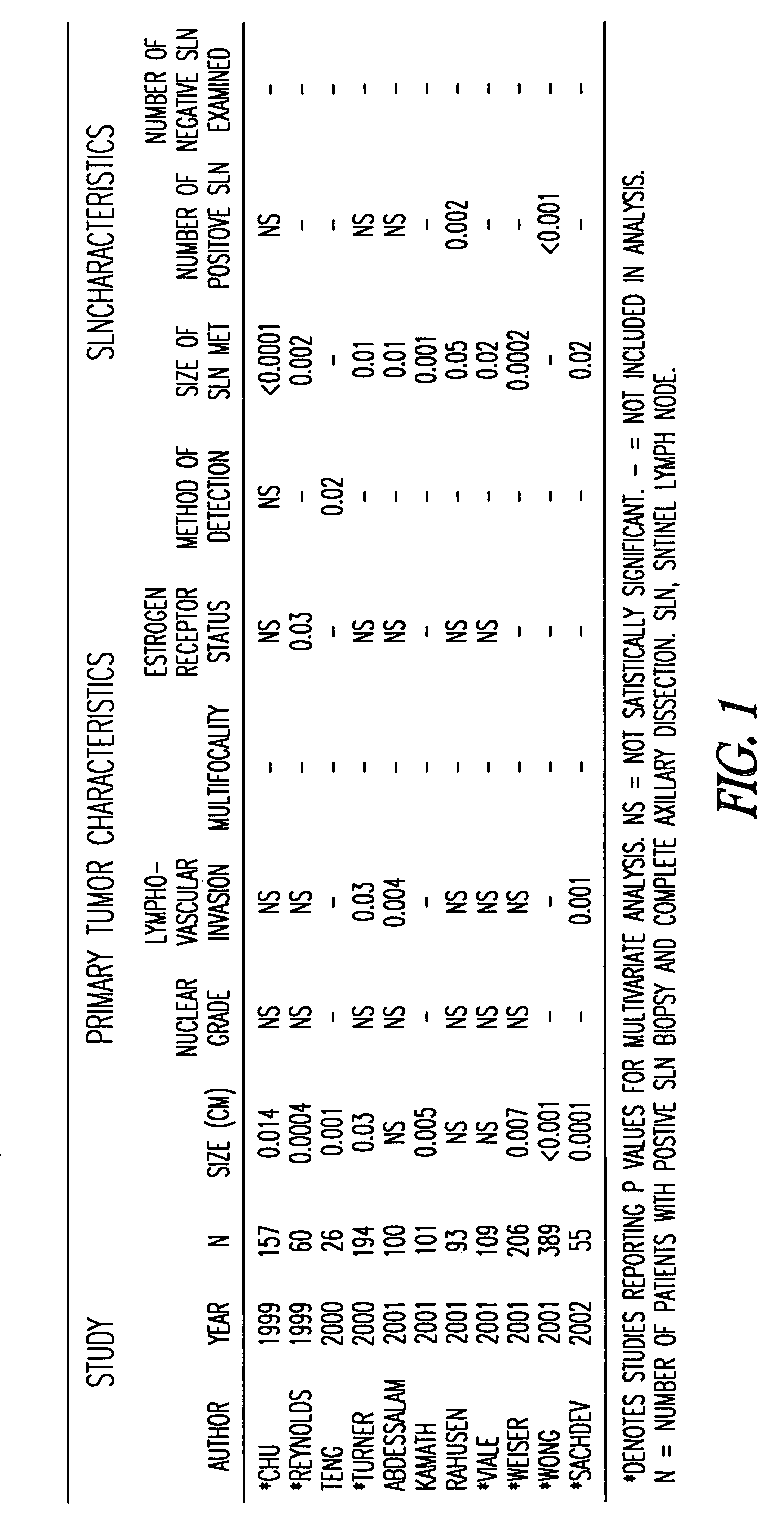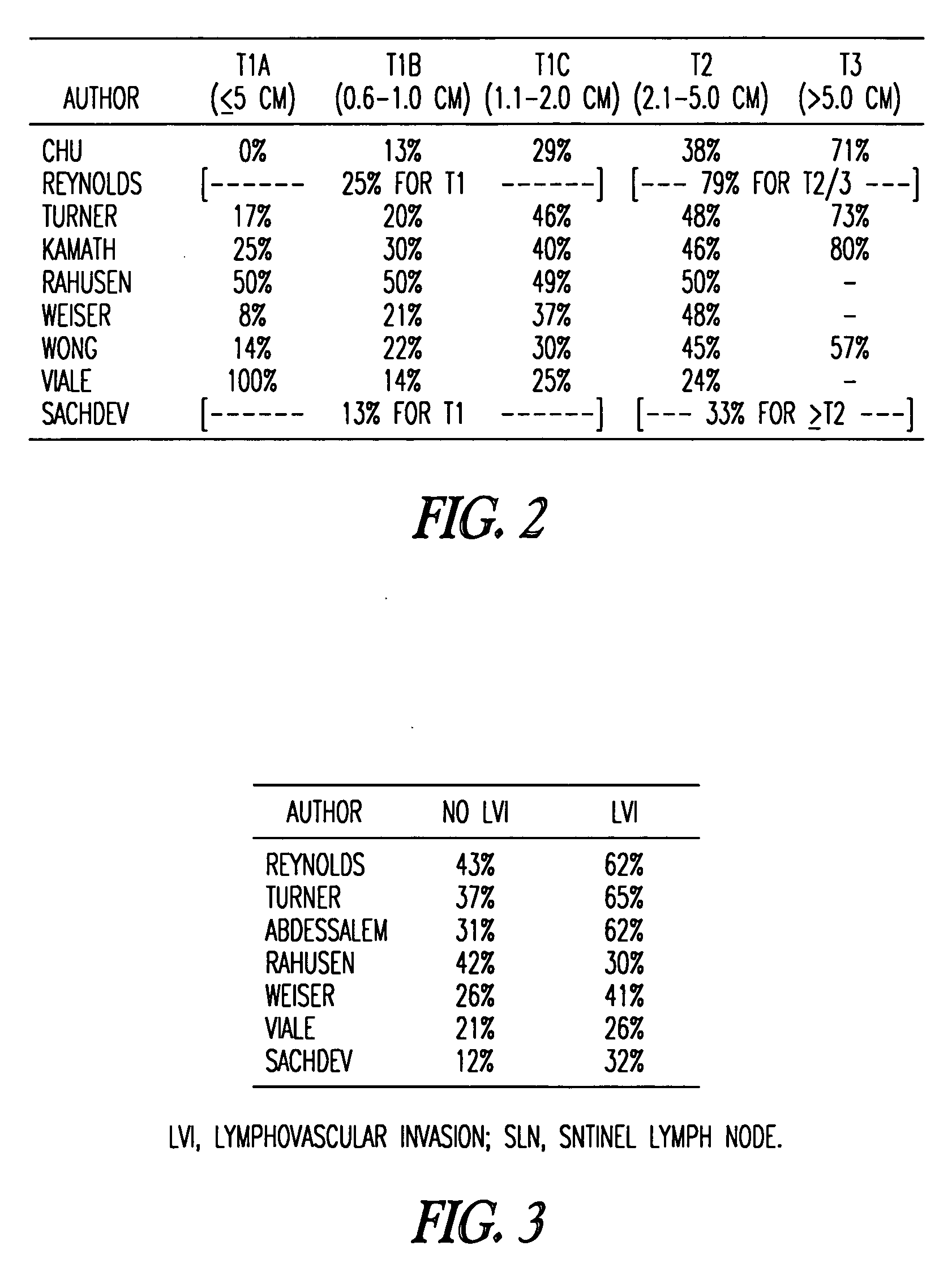Methods to predict additional nodal metastases in breast cancer patients
a breast cancer and nodal metastasis technology, applied in the field of methods to predict additional nodal metastases in breast cancer patients, can solve the problems of predicative models that appeared to substantially outperform clinical experts, and achieve the effect of accurately and accurately predicting the likelihood of additional, non-sentinel lymph node metastases in an individual patien
- Summary
- Abstract
- Description
- Claims
- Application Information
AI Technical Summary
Benefits of technology
Problems solved by technology
Method used
Image
Examples
example i
[0052] In an attempt to achieve a more precise prediction for the individual patient than is readily available by using published estimates of risk, a multivariable logistic-regression analysis of a large data set was used to model the association between selected variables and the likelihood of metastases in non-SLN in patients with a positive SLN biopsy. The pathologic size of the primary tumor, the method of detection of the SLN metastasis, as well as several other variables that are readily available and likely related to risk of additional nodal disease, were examined. 702 cases from a large prospective sentinel lymph node database were employed to develop the model, and a nomogram was developed to predict the likelihood of finding additional positive nodes at completion ALND. The model was then tested by prospectively applying it to an additional study group comprising 373 patients. This tool allows greater individualization of a patient's risk estimate by simultaneously takin...
example ii
Methods
[0078] Construction of the nomogram is described in Example I. In brief, 702 cases of primary breast cancer in which the SLN was positive for metastasis were identified from a prospectively collected SLN database. Using primary tumor and SLN metastasis characteristics, a multivariate model was created to predict the likelihood of additional, non-SLN metastases being found at completion ALND. The model was subsequently applied prospectively to an additional 373 patients (validation population), and found to accurately predict the likelihood of residual disease (area under the receiver operating characteristic curve=0.77).
[0079] For experiment I, 33 women were selected at random from the validation population used to confirm the original nomogram. The characteristics of these women were supplied to 17 participating clinicians for their prediction (Table 5). Clinicians were asked, for each patient, “If 100 women with these characteristics were to have a positive sentinel node...
PUM
 Login to View More
Login to View More Abstract
Description
Claims
Application Information
 Login to View More
Login to View More - R&D
- Intellectual Property
- Life Sciences
- Materials
- Tech Scout
- Unparalleled Data Quality
- Higher Quality Content
- 60% Fewer Hallucinations
Browse by: Latest US Patents, China's latest patents, Technical Efficacy Thesaurus, Application Domain, Technology Topic, Popular Technical Reports.
© 2025 PatSnap. All rights reserved.Legal|Privacy policy|Modern Slavery Act Transparency Statement|Sitemap|About US| Contact US: help@patsnap.com



